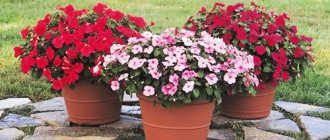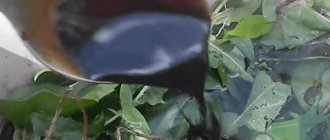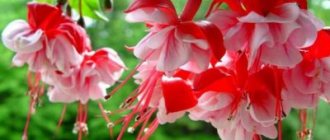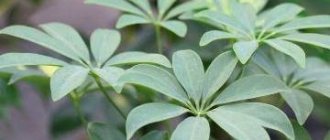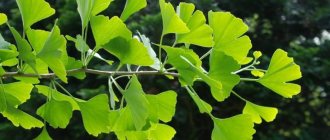Waller's balsam (Impatiens walleriana), also known as “impatiens”, is a herbaceous plant of the balsam family, with wide, alternate jagged leaves of a dark green or reddish color, about 60 cm high.
Impatiens is native to the tropical zones of Africa and Asia, since 1596 became widespread in Europe and America. Its flowers, simple or double, are arranged singly and have a bright palette of various shades, except yellow and blue. After the bud fades, the plant forms a fruit-box, which easily opens, releasing a large number of small seeds.
Impatiens is a fast-growing perennial that blooms most of the year. When propagated already in the third month after germination, balsam produces the first flowering.
Also be sure to check out how to grow apthenia at home.
| The growth rate is high. |
| Blooms from early winter to early spring. |
| The plant is easy to grow. |
| It is a perennial plant. |
Botanical description and history
Impatiens originate from the forests of Asia and Africa. These are heat-loving plants that love moisture. Waller's balsam (Impatiens walleriana) has long been grown as a houseplant. People call it Vanka wet (there are small drops of moisture at the tips of the leaves) and Impatiens (when touched, it “scatters” seeds).
In general, Waller's balsams are classic, just those that grow on window sills, and hybrid ones, suitable for flower beds. The latter are short-growing (15-30 centimeters), richer in color and bloom more profusely. They can withstand fluctuations in temperature and humidity and can tolerate heat in a flower garden. They can also grow at home, blooming on a bright windowsill even in winter.
Reference! Hybrids can be purchased at garden centers and look good in hanging planters for decoration.
Balsam Valera or Wallera (Impatiens Walleriana)
Waller's Impatiens is a herbaceous perennial plant called Impatiens Walleriana in Latin. The flower is also known by the names "wisps" and "impatiens". Its homeland is East Africa (from Kenya to Mozambique). The genus includes many species of flowering plants, widely distributed in the Northern Hemisphere and the tropics. Together with the genus Hydrocera, Impatiens form the family Impatiens.
Terry balsam
Annual species produce flowers from early summer until the first frost. Perennial, found in milder climates, they can bloom all year round. There are varieties of different colors and shades. Impatiens are grown both outdoors and indoors.
Important! The flower is ideal for well-lit interiors, terraces, patios, verandas, windows and balconies and as a hanging plant.
Short description
Impatiens Valera has lanceolate leaves 2-5 cm wide and can reach a height of 15–60 cm. Flowers measuring 2-5 cm in diameter usually have 5 petals. Flower colors vary: white, orange, pink or red.
Description of appearance and features
This is a perennial (in warm regions) bush plant with a height of 20 to 60 centimeters. It has erect, succulent stems, strongly branched. The leaves are wide, large, oval in shape, pointed towards the end, with jagged edges and light green in color.
Their length is about 10 centimeters. The flowers are 4 centimeters in diameter, either solitary or collected in few-flowered inflorescences. The pedicels are long. themselves can be simple or double and of different shades (usually red or pink).
Hybrids are smaller in height - from 15 to 30 centimeters, branch more strongly, produce more flowers, varied in shades. It grows quickly, blooms early and decorates the garden all summer long. Quite unpretentious, can grow in relative shade.
Varietal diversity
The color range and varietal variety of Waller's balsams pleasantly surprises. The flower can be matched to various landscape compositions, flower beds, and alpine slides. Use as a border plant.
Musica pure white
Luxurious double soft white large flowers completely cover the bush. The inflorescences resemble roses, the diameter of the flower is 20 millimeters. Perfect for growing in flowerpots and individual pots. It requires watering and does not tolerate drought well.
Musica bicolor dark red
Classic red combined with transitions to white is a distinctive feature of the color of the inflorescences. Each flower is individual and unlike the other. The bush is compact, small in height.
Musica fine purple
The cosmic purple color of the inflorescences is mesmerizing. The flowers are large, double, and bloom together. The plant loves moisture and can be grown in partial shade. Forms a powerful root system.
Musica red crimson
The unforgettable scarlet color of large double inflorescences. The plant looks great in flower arrangements and individual pots. The bush is powerful and spreading. Regular watering is required.
Musica pink energy
“Energetic pink” is the literal translation of the variety’s name. The color saturation is truly amazing. Decorate terraces and balconies of garden plots and cottages. Looks great in compositions with Musica pure white.
Musica orange energy
The juicy red-orange color of the inflorescences looks piquant in flower arrangements and landscape projects. The flowers are large, double, and completely cover the bush. Does not tolerate drought and overdrying of the soil.
Photo of an indoor flower – Vanka wet
Next you can see what Waller's balsam looks like in the photo.
This beautiful flower is very popular among gardeners. If you decide to grow such a long-flowering and unpretentious plant, then you may be interested in learning more about it. On our website you will find a lot of information about the following types and varieties of this plant: Wild, Zheleznokosny or Zhelezisty, New Guinea and Tom Samb. We also talked separately about hanging varieties of balsam.
When to sow balsam for seedlings
It is more advisable to plant balsam seedlings in the last ten days of March or the first of April. However, the timing of planting depends more on the region and its climatic conditions.
In the southern regions, planting can begin in the first half of February, while in the middle zone, namely in the Moscow region, the optimal time is in early spring. In Siberia, the Leningrad region, Karelia and the Urals, the planting date may be postponed to the beginning of April.
Most gardeners use the lunar calendar when calculating planting dates.
Favorable days:
- from 12 to 17, 19 and 20 March;
- 6-8, 11-13, 15-17, 29 and 30 April.
The following are considered unfavorable:
- 6 and 7, March 21;
- April 5 and 19.
You can also determine the timing of disembarkation the other way around. Since balsam transplantation most often takes place in late May-early June, and growing seedlings takes 3-4 months, depending on the region, the sowing date is determined by a countdown.
Growing difficulties
This species has certain problems. The most common problems with Waller's Impatiens are listed below .
- Small, pale leaves. elongated stems. Lack of nutrients, cramped pot, high temperature, lack of lighting.
- Leaves fall, curl, stems rot. Dampness, low temperature.
- The leaves dry out and fall off. Dry air, high temperature.
- Loss of color in leaves. Lack of lighting.
- Weak flowering or its complete absence. Lack of lighting, nutrients or excess fertilizers, especially nitrogenous ones.
- Stop flowering. Frosts, cold snaps, dry soil, too large a pot, incorrectly chosen time of replanting.
All these troubles can be dealt with if you pay attention to the condition of the plant in time and take action.
Dormant period: caring for balsam in winter
How to preserve Balsam until next year? Balsam does not have a rest period in the usual sense. For several winter months it is forced to take a break from vigorous flowering, since there is not enough light for it to bloom fully. At this time, it is necessary to move the flower to a cooler room (16 - 18 degrees). Temperature is 10 degrees. is critical for Balsam.
In winter, you need to protect the plant from strong drafts.
Watering should be reduced, but just like in summer, it should be watered when the top layer of soil has dried to a depth of 1 cm. The soil should not be overdryed, as this can lead to weakening and delayed development of the flower. If the room is too dry and hot, you need to spray the air around the flower without spraying it onto the buds. It is better not to fertilize.
If you arrange additional artificial lighting for the flower using a phytolamp or a fluorescent lamp, then maintain other care items necessary for the flower - warmth, watering, fertilizing with liquid fertilizers once a month in a weak concentration. Then Ogonyok will delight you with its blooms all year round.
Rules and advice on landing conditions
is considered difficult to grow from seed . Indeed, they need to be sown in January or mid-March, if you are sure of the quality, in sand or a mixture with peat, under mandatory additional lighting. Moreover, the seeds are placed on the surface of the soil, slightly pressed into it, and the top of the pot should be covered with film for better germination.
It is important to shake off the condensation from it so that they do not get fungal diseases. The temperature should be room temperature, about 25 degrees. The germination process takes from 7 to 14 days, during which it is important to control humidity and ventilate the seedlings. To prevent them from stretching, you need to reduce the temperature to 17 degrees.
Grown-up seedlings of Waller's balsam are transferred to open ground in June , when the likelihood of frost for herbaceous plants disappears.
Reference! It can also be grown from cuttings taken in the fall. They are grown in pots as houseplants, and can be replanted in the spring or left at home if desired. The requirements for soil and conditions are similar.
Lighting and location
They grow well both in partial shade and in sunny areas. True, it is better not to plant it in direct sunlight, where the plant can get leaf burns. Heat-loving, does not tolerate temperatures below 5 degrees. The best landing place is on a slope where the sun lingers for a couple of hours a day, no more. If Waller's balsam grows at home, then choose any window direction except south. The temperature should not fall below 22-25 degrees.
Soil requirements
Loves light, fertile soils . Does not tolerate excess moisture, so moderation is important. It is better to water in the evening so as not to burn the leaves. When growing at home, you should not forget about fertilizing the soil with fertilizers, but in moderation and not too often.
Bloom
The flowering period is long - all summer and autumn. Under favorable conditions, flowering will continue until January.
The dormant period lasts from December to February. During this period, ensure a thermal regime of about 15 degrees, and also limit watering.
Fertilizer/feeding
every 14 days
in the spring and summer months To do this, purchase complex fertilizer for flowering plants at the flower shop. In order not to oversaturate the soil, it is advisable to use 1/2 of the dosage specified in the instructions.
Growth rate
Waller is growing up very quickly. From the cuttings, a bush with a large number of flowers grows in two months. Even by sowing seeds in March, you can get a flowering bush as early as July.
Lifespan
Impatiens retains its decorative appearance for 2-3 years. After this period, its shoots lengthen, the stems become bare, and flowering stops.
Smell
The flowers have a sweetish aroma that attracts bees when they are on the balcony or in the garden.
Care at home and in the open ground
Waller's balsam is quite unpretentious and does not require much care. The soil should always be moist, but not excessively. In winter, watering for potted bushes is reduced and done after the soil has dried. The leaves can be sprayed, the main thing is not during direct exposure to the sun. Fertilize from March to September once every two weeks if the flower is planted in open ground.
It is important to remember that stems and leaves are especially fragile due to moisture saturation , so they should grow either next to each other, as support from the wind, or in windless areas of the garden. It is better to remove faded buds to maintain a beautiful appearance and allow new ones to bloom freely.
In the fall, before frost, garden balsams of this variety are covered, and the pots are brought into a warm room. It is not advisable to transplant from the garden into a container; it is better to root the cuttings for subsequent cultivation from them.
How to plant seeds?
Many varieties of balsam are planted as seedlings. Good results are obtained using seeds originally from Siberia, Kuban and New Zealand seed material. The most popular of them: “Tom Thumb”, “Camellia”, “Super Elfin”.
"Tom Thumb"
This variety has a vigorously growing bush and large flowers. The variety is suitable for forming flower beds, lawns, flower beds, and outdoor vases. The height of the Tom Thumb variety usually does not exceed 25 cm.
"Camellia"
One of the new varieties of garden balsams, which looks very impressive and is distinguished by large double flowers. Often planted in mixed flower beds. The height of the bush reaches 25 cm, and the diameter of the flower can reach 4 cm.
"Super Elfin"
This is a dwarf variety of balsams, which is known to many as “Vanka wet”. The variety is unpretentious and has long flowering. Before sowing balsam seeds of any variety for seedlings, you should properly prepare the soil. There are several options for preparing it.
For example, mix 1 part vermiculite, 1 part sand, 1 part leaf soil and 2 parts lowland peat. You can also take only peat and vermiculite in equal parts
Popular articles How to grow shiitake mushrooms at home
In this case, it is not necessary to adhere to exact proportions, but it is important that the substrate is loose, absorbs water well and allows air to pass through
Next, you can proceed directly to planting the seeds.
- The seeds must be treated for several minutes in a weak solution of manganese.
- Then they are soaked for 1 day in warm water.
- The sowing tray must be selected at least 8 cm.
- The bottom of the container must be perforated to drain excess liquid.
- The bottom of the container is lined with a drainage layer - expanded clay or fine gravel. The height of the drainage layer is 2 cm.
- Then the prepared soil is poured into the container.
- To disinfect the soil, a day before planting, it is calcined in the oven or spilled with Fitosporin.
- The seeds are located on the soil surface at a distance of 3-4 cm from each other. You should not sprinkle soil on top of them, because they require light to germinate.
- Then the sown seeds are sprayed with water using a spray bottle.
- The top of the container with the sown balsam seeds is covered with glass or film, constructing a mini-greenhouse.
- The container with the seeds is placed in a warm place and periodically ventilated by opening the film or moving the glass.
If there is not too much seed material, it can be sown in peat tablets. After disinfection and soaking of the seeds, planting is carried out as follows.
- The tablets are soaked in moisture until completely swollen.
- After this, the seeds are sown one at a time on the surface of the soil, not buried deep, but simply gently pressed onto the substrate with a toothpick or match.
- Then the container is covered with plastic wrap and placed in a warm, bright place, avoiding direct sunlight.
Features of reproduction
The plant is mainly grown from seeds . Take fresh, high-quality seeds. They are not used from hybrids, as they will not give the properties of the parents. It is also propagated by cuttings, which take root within one to two weeks.
Do not allow high salt content in the soil and maintain optimal humidity and light for the variety. You can grow a home bush from cuttings without any problems. This method is more preferable for beginner gardeners due to its greater simplicity.
Waller's balsam is a beautiful and long-flowering plant that can decorate any garden or home . Its unpretentiousness and relative ease of care have allowed it to become so popular among gardeners. Impatiens of this variety will give only positive impressions and will definitely become one of your favorites among other plants.
We invite you to watch a video about propagating Waller's balsam from seeds:
general characteristics
Among the people, balsam has several nicknames: impatiens - because the seed pods burst at the slightest touch. Or Vanka is wet - because after watering, droplets of water remain at the ends of the leaves, which then seem to be candied. The flower was nicknamed the fire for its bright scarlet, red and pink flowers, which are common to most varieties. The flower grows from small graceful bushes to 50 cm, depending on the variety. It has a fleshy, strong stem and the same leaves with wavy edges and a bronze or reddish tint. The flowers are hidden in the axils between the leaves and delight with a variety of color spectrum - especially modern hybrid species. They are orange, white, purple, spotted or striped. The bright color stands out against the background of rich dark leaves, and balsam can bloom all year round - it’s not for nothing that it is called the evergreen.
